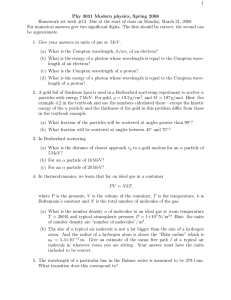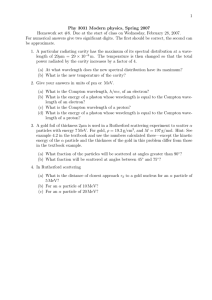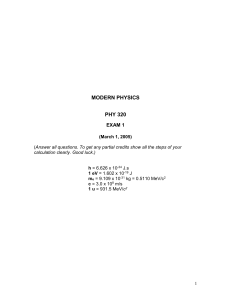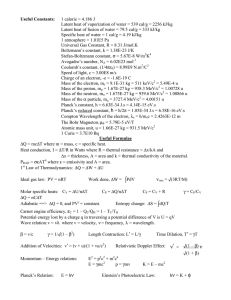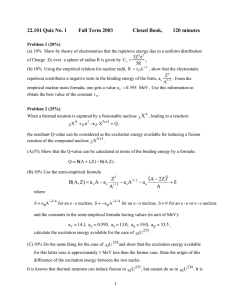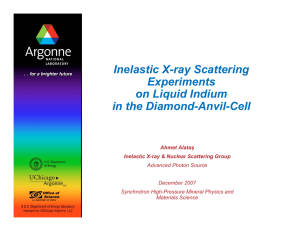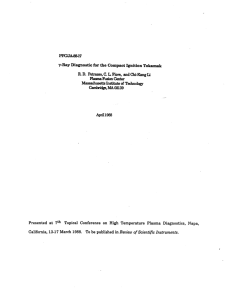MODERN PHYSICS PHY 320 EXAM 1
advertisement
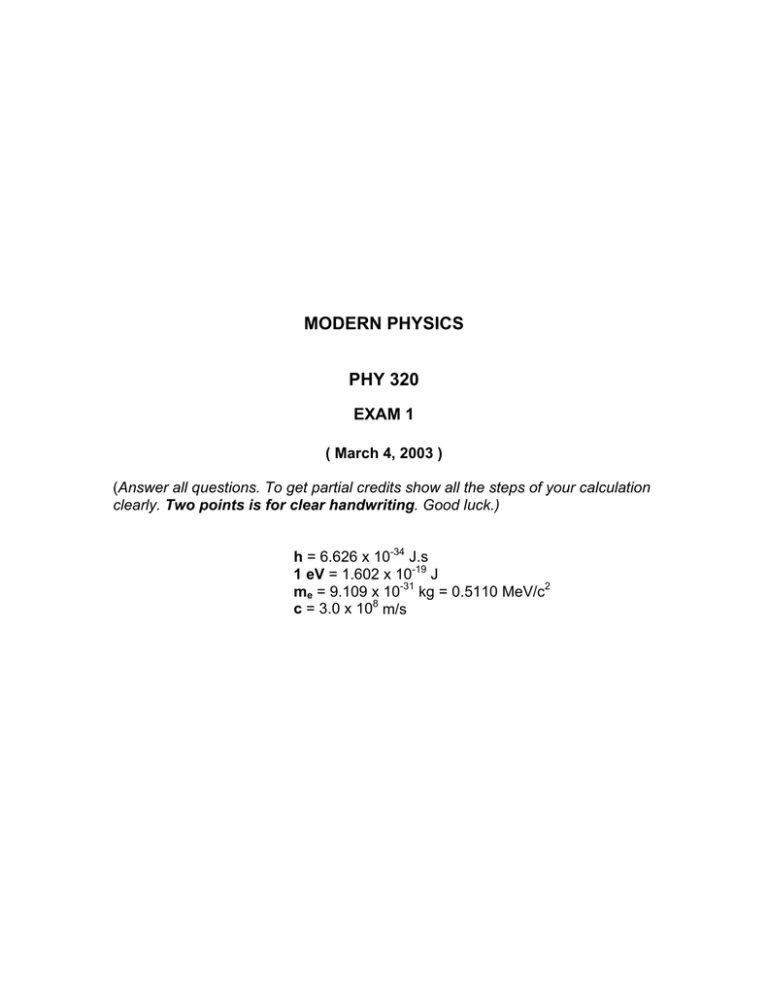
MODERN PHYSICS PHY 320 EXAM 1 ( March 4, 2003 ) (Answer all questions. To get partial credits show all the steps of your calculation clearly. Two points is for clear handwriting. Good luck.) h = 6.626 x 10-34 J.s 1 eV = 1.602 x 10-19 J me = 9.109 x 10-31 kg = 0.5110 MeV/c2 c = 3.0 x 108 m/s 1. Briefly and clearly answer the following questions: (4 x 12 = 48 pts) (a) Define inertial frames. (b) Give two examples of non-inertial frames. (c) What are the postulates of special theory of relativity? (d) Two lasers situated on a moving spacecraft are triggered simultaneously. An observer on the spacecraft claims to see the pulses of light simultaneously. What condition is necessary in order that another observer agrees that the two pulses are emitted simultaneously? (e) What happens to the density of an object as its speed increases, as measured by an Earth observer? (f) What would you see in a mirror if you carry it in your hands and run at the speed of light? (g) All objects radiate energy. Why, then, are we not able to see all objects in a dark room? (h) Some stars are observed to be reddish, and some are blue. Which stars have the higher surface temperature? Explain clearly. (i) What is the reason for choosing a carbon target (graphite for example) in Compton’s original experiment? (j) Explain why there are in general two peaks in the X-ray intensity versus wavelength plot in the Compton scattering experiment. (k) What is light? State three differences between light and sound waves. (l) What do you learn regarding the nature of light waves from the three classic effects: blackbody radiation, photoelectric effect, and Compton effect? Problems: (Make sure to show all the steps clearly) (10 x 5 = 50 pts) 2. How fast and in what direction must galaxy A be moving if an absorption line found at 550 nm (green) for a stationary galaxy is shifted to 700 nm (red) for A? Sol: 3. The pion has an average lifetime of 26.0 ns when at rest. For it to travel 10.0 m, how fast must it move? (Leave the answer in terms of c) Sol: 4. Calculate the binding energy in MeV per nucleon in the isotope 12C6. Note that the mass of this isotope is exactly 12 u, and the masses of the proton and neutron are 1.007276 u and 1.008665 u, respectively. [ 1u = 931.5 MeV/c2 ] Sol: 5. The work function for potassium is 2.24 eV. If potassium metal is illuminated with light of wavelength 350 nm, find (a) the maximum kinetic energy of the photoelectrons and (b) the cutoff wavelength. Sol: 6. Gamma rays (high-energy photons) of energy 1.02 MeV are scattered from electrons that are initially at rest. If the scattering is symmetric, that is θ = ϕ, find (a) the scattering angle θ and (b) the energy of the scattered photons. Sol:

